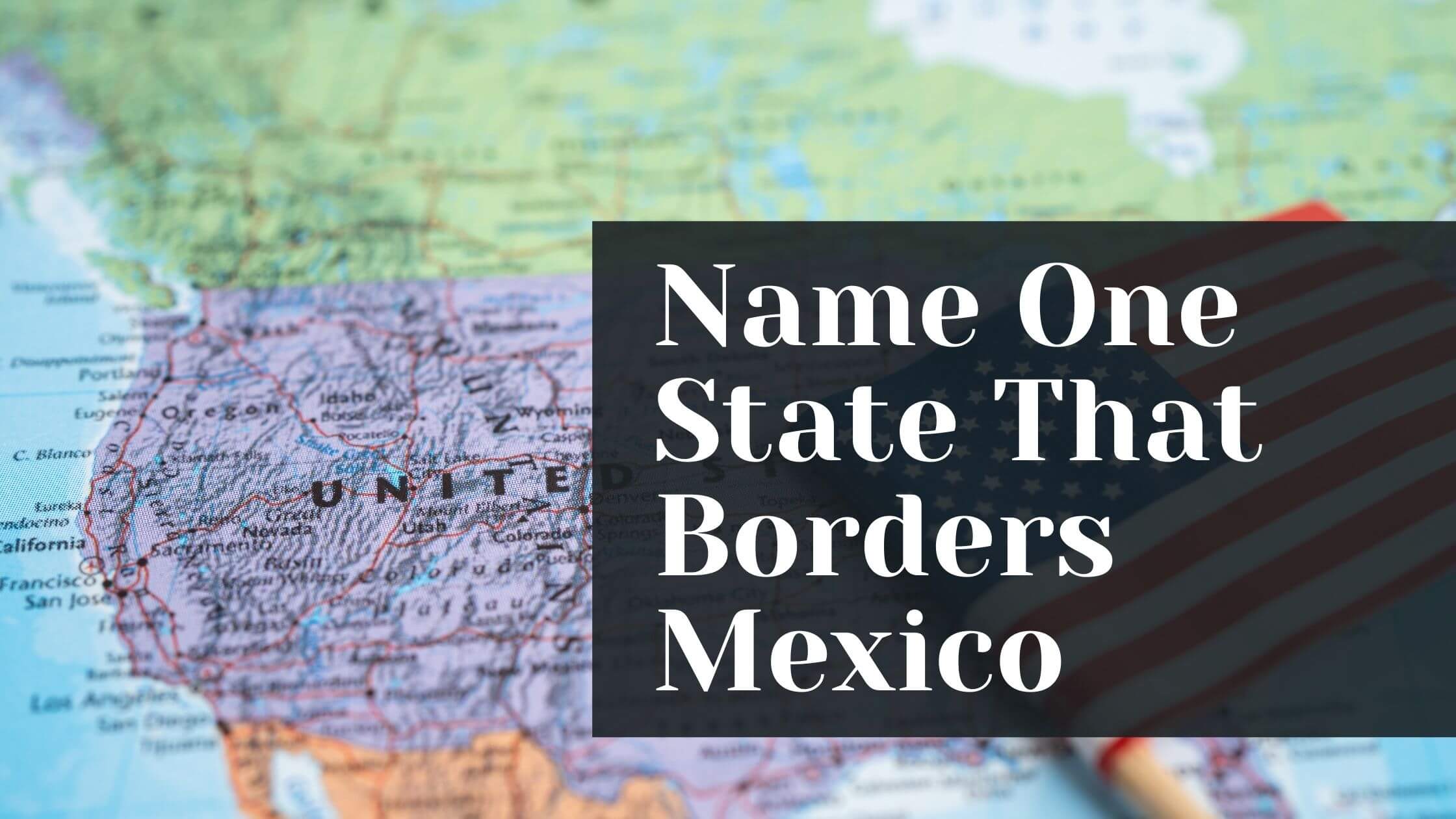Table of Contents
ToggleTo pass the US citizenship test, you will have to answer 10 of a possible 100 questions. The following question is from the USCIS test.
Name one state that borders Mexico.
Acceptable Answers:
- California
- Arizona
- New Mexico
- Texas
The following is a full explanation of the USCIS question:
This portion of the test will only require you to provide one answer, so it may be best to memorize a single one of these. New Mexico is perhaps the easiest to recall because of its name. However, plenty of California and Texas natives are sure to name their own state because of their close relationship with Mexico at the border. Here is some more information about the southern border and some of its issues.
The Mexican Border With The United States
The Mexican border is a 1,954-mile stretch of land that has been the subject of redevelopment for hundreds of years. The lines were redrawn a number of times in the mid-1800s as the United States moved west. Since then, the boundary has remained constant with the borders along California, Arizona, New Mexico, and Texas.
Today, the region is renowned for the illegal crossings of migrants, attempts by refugees to reach safety in America, and the measures in place to handle both. There are physical boundaries and patrols in place, and an average of 350 million crossing a year.
Which States Are On the Mexican Border?
The 1,954-mile border is long but nowhere near that of the 5,525 miles of the Canadian border. This is simply because of the shape of the country. It is broad at the top, but the south has Mexico to one side and the Gulf of Mexico to the other. That is why only four states have boundaries with Mexico. Other southern states, like Louisiana, Alabama, Mississippi, and Florida, border the Gulf instead.
California
California is a state with many different cultural identities and landscapes, depending on where you are. Northern areas closer to Oregon are vastly different from the hotter regions closer to the Mexican border. The border splits California from Baja California on the Mexican side. Key cities on the border include Tijuana, which is just a stone’s throw from San Diego, and Mexicali, which is the region’s capital.
Arizona
Further east from Mexicali, the straight line takes a dog-leg turn and heads southeast into Mexico. This reflects the changes to the landscape to allow for the later expansion of the state. The border runs below Phoenix and Tusco past the Tohono O’odham Nation Reservation and then towards New Mexico.
New Mexico
The New Mexico part of the border is surprisingly short for a state that bears the name of the other nation. It begins south of the Gila National Forest and continues to the border of Texas.

Get Smarter on US News, History, and the Constitution
Join the thousands of fellow patriots who rely on our 5-minute newsletter to stay informed on the key events and trends that shaped our nation's past and continue to shape its present.
Texas
At this point, the border reaches Texas and the large city of El Paso. This urban area is one much larger region with the border running through the middle. El Paso is on the United States side, and Ciudad Juarez is below in Mexico. The border then meanders southeast again along the top of Chihuahua and into Big Bend National Park.
Then, the border meets up with the infamous Rio Grande and runs along its length before continuing southeast into the Gulf of Mexico. It goes relatively close to San Antonio before progressing through Nuevo Laredo and on to Matamoros.
The official land border with Mexico ends there, and the rest of the Texan southeastern boundary meets the coast. The Gulf of Mexico is a vast shared body of water that services Corpus Christie, Texas, New Orleans, and various cities on the western side of Florida. It also curves around to create the eastern coast of Mexico and meets the shores of Cuba.
The Evolution Of The United States-Mexico Border
The boundary between Mexico and the expanding United States has evolved greatly over the centuries. There was a time when Mexico owned a large area of modern-day America, but this was later ceded to the United States following the Mexican-American War.
The region in question covered much of the southwest and corresponds to what is now California, Nevada, Utah, the majority of Arizona, and even parts of New Mexico, Colorado, and Wyoming. This territory was claimed in the Mexican cession of 1848 and later developed into today’s states. California was the first of these new states, as settlers prized this land.
Over time, the gap took shape with the formation of New Mexico, Texas, and Arizona along the border. The final shape of the border as it is now was determined in 1853. The Gadsden Purchase of 1853 saw 30,000 square miles of northern Mexico claimed for Southern Arizona and New Mexico. This $10 million purchase was the result of the need for suitable land for a transcontinental railroad into California.
Controversies Over Border Control And Crossings
There is a striking contrast between the border with Canada and the one with Mexico. Up north, there is greater freedom of movement, although visa and other checks are made at border crossing points. It is generally easy for Americans and Canadians to cross each other’s borders. The checkpoints between Mexico and the United States are often a little different.
There is also the issue of the wall. The wall has been in place to some extent long before the claims of Donald Trump that he would build one and make Mexico pay for it. It has led to a lot of controversies and anti-Mexican rhetoric. Meanwhile, border patrols have increased. The scheme led to just 47-miles of the new border fence being built before President Biden canceled President Trump’s executive order.
The Mexican border isn’t without its issues, but it is still a vital resource for those in southern states looking to work, vacation, and build relationships with those in Mexico. The shift in the border also means that the influence of the culture is plain to see before you even step foot in Mexico itself.











